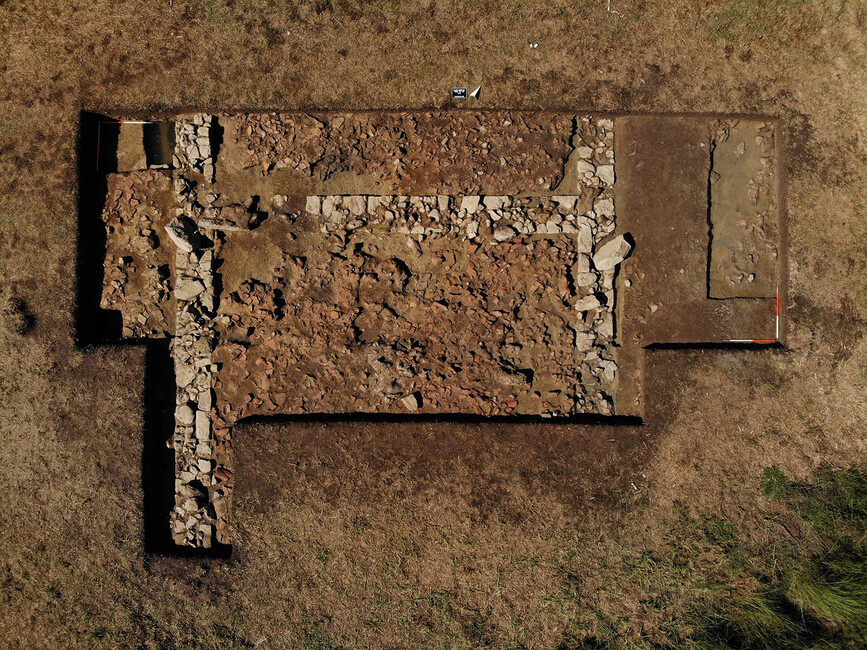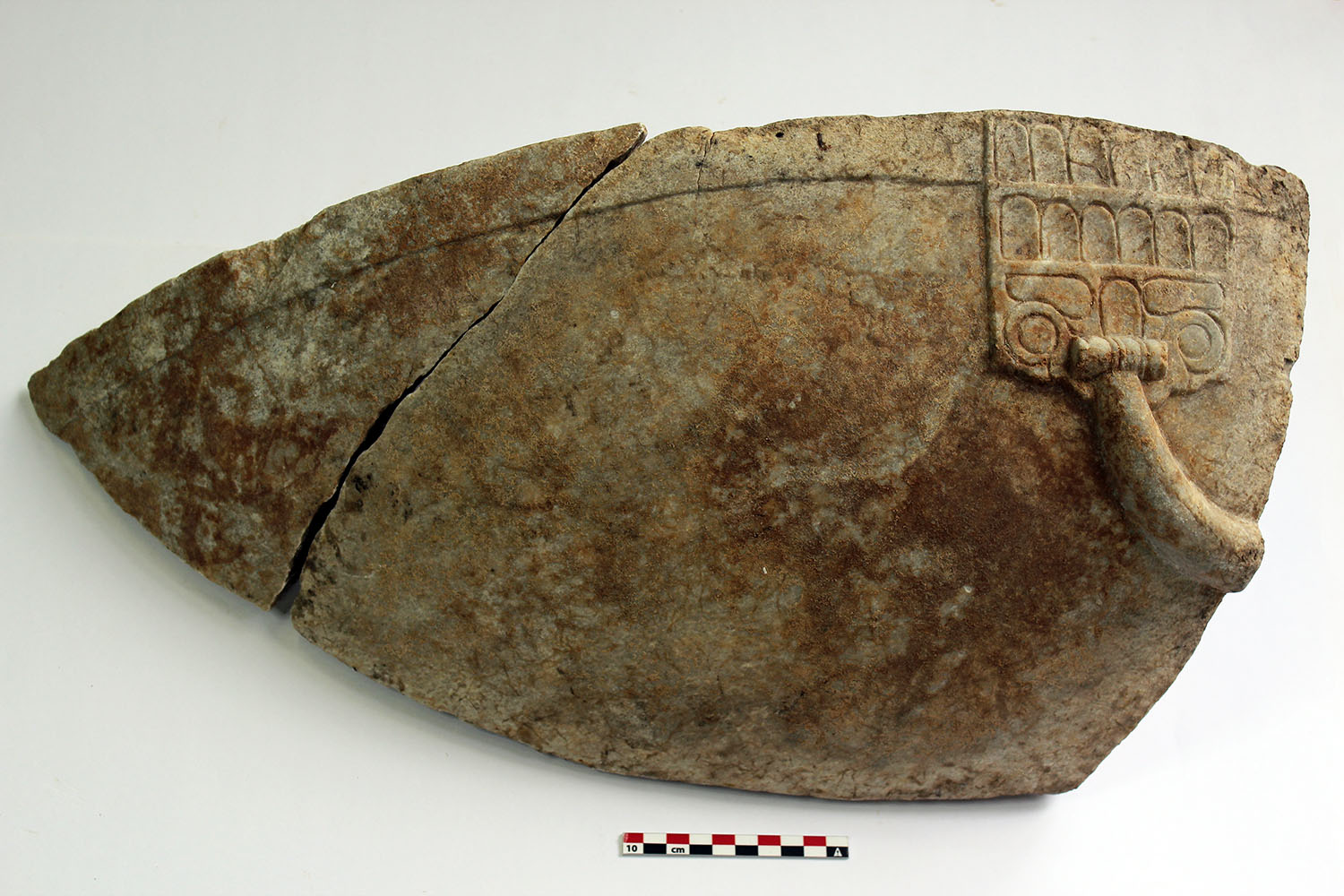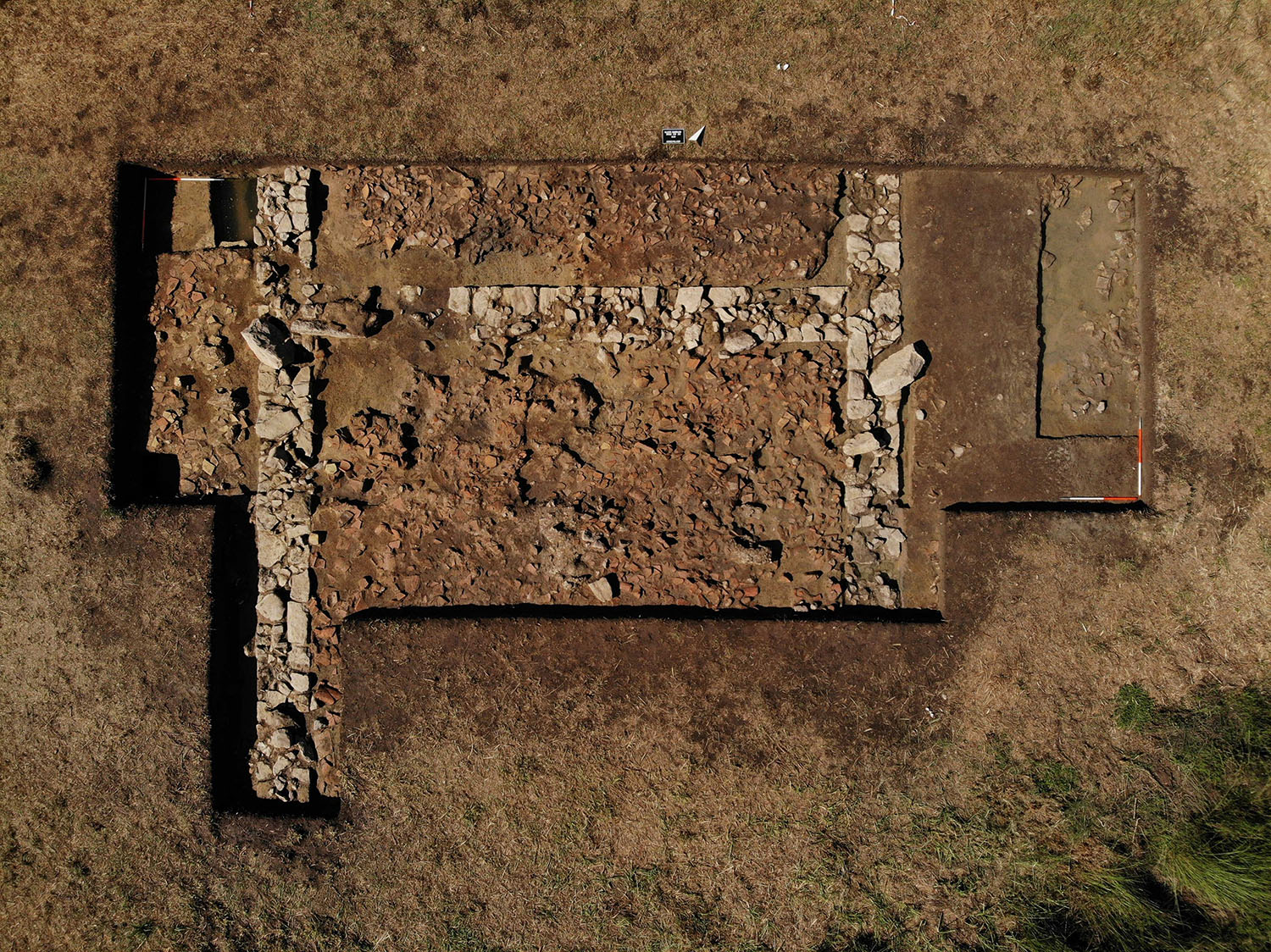For a long time, the location of the famous ancient sanctuary has been suspected in the plain below the ancient fortress of Samikon, which dominates the landscape from afar being positioned on a hilltop north of the lagoon of Kaiafa on the west coast of the Peloponnese. Based on the information conveyed by Greek author Strabo in the 8th book of his »Geographika«, the regionally important cult centre of the amphictyony (league of cities around a sanctuary) of the cities of Triphylia, the ancient landscape on the west coast of the Peloponnese, was located here. Now OeAI archaeologists have uncovered the remains of an archaic temple at the foot of the Samikon fortress, which probably belonged to the temple district of Poseidon.
In 2022, a new five-year research programme of the OeAI under the direction of Birgitta Eder started in cooperation with the Greek Ephory of Antiquities of Elis under the direction of Erofili Kolia in Kleidi-Samikon. The aim is to explore the topography of the area, to investigate the sanctuary of Poseidon and to locate the port of Samikon. This was preceded by geoarchaeological and geophysical investigations in 2017, 2018 and 2021 by the Ephory of Antiquities of Elis and the OeAI in cooperation with the universities of Mainz (Andreas Vött) and Kiel (Dennis Wilken).
Already in the first campaign, which took place in August and September 2022, building remains were found that lie within the sanctuary of Poseidon. The archaeologists exposed parts of the foundation of a large 9.40 m wide building, whose carefully set walls have a width of 0.80 m. Thick layers of roof tiles fill the space between the walls. Based on the anomalies of the geophysics, a building of at least 28 m in length can be calculated, which had two interior rooms as well as a pronaos (temple vestibule) and an opisthodome (rear hall) or adyton (restricted area within the inner chamber). The elongated large building can be nothing other than an archaic temple located on the site of the sanctuary of Poseidon, perhaps even dedicated to the god himself.
In connection with the fragments of a laconic roof, the discovery of a marble perirrhanterion, a cultic water basin, provides evidence for dating the large building to the Archaic period. The large marble vessel itself, imitating a bronze bowl, is characteristic of the inventory of a sanctuary.
This discovery allows new perspectives on the political and economic importance of the amphictyony of the Triphylian cities in the 6th century BC, for whom the sanctuary of Poseidon at Samikon formed the centre of their religious and ethnic identity.
The research, funded by the Gerda Henkel Stiftung and the Austrian Archaeological Institute at the OeAW, will continue in the coming years to further investigate the sanctuary of Poseidon and the archaic temple.



